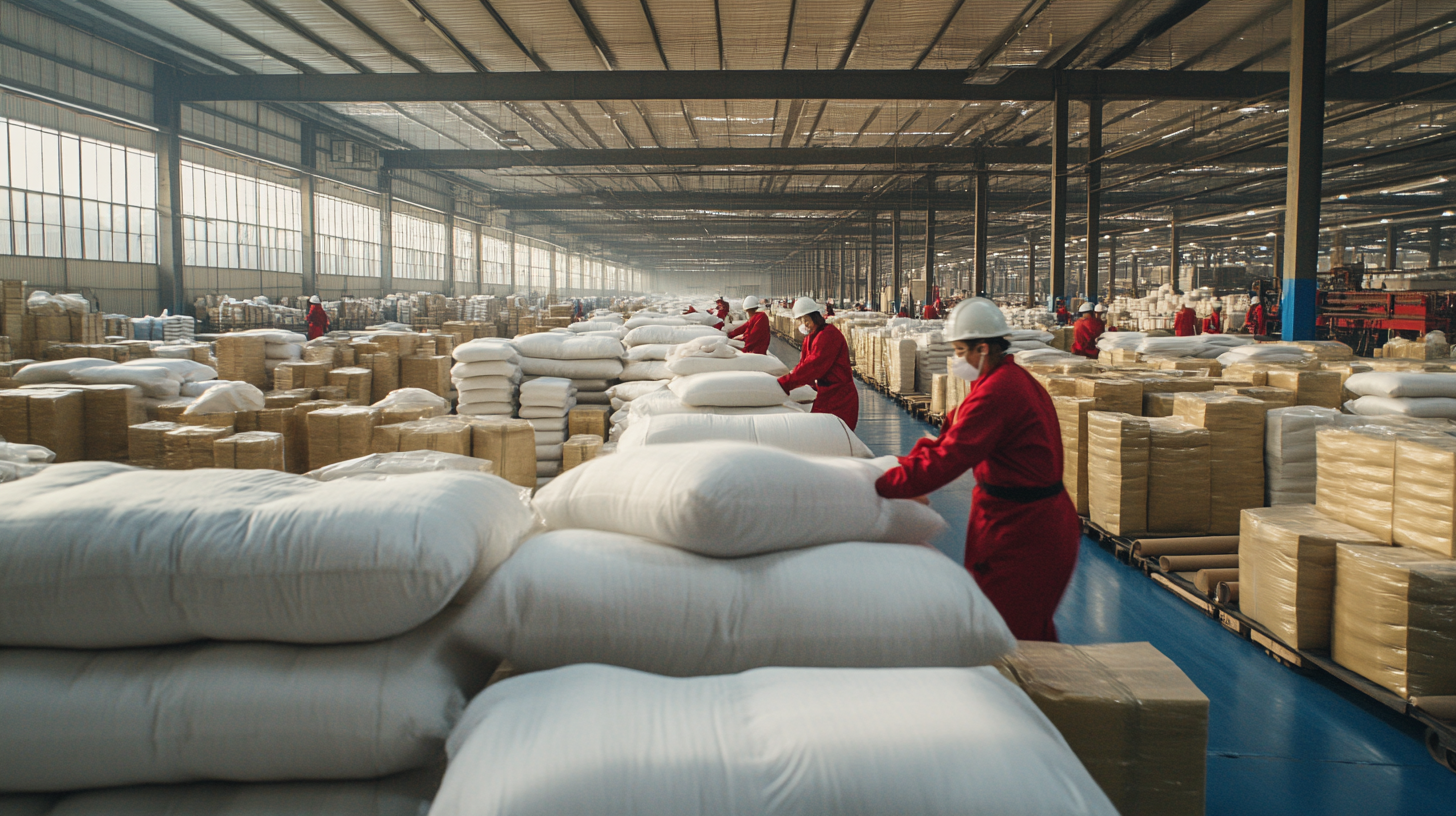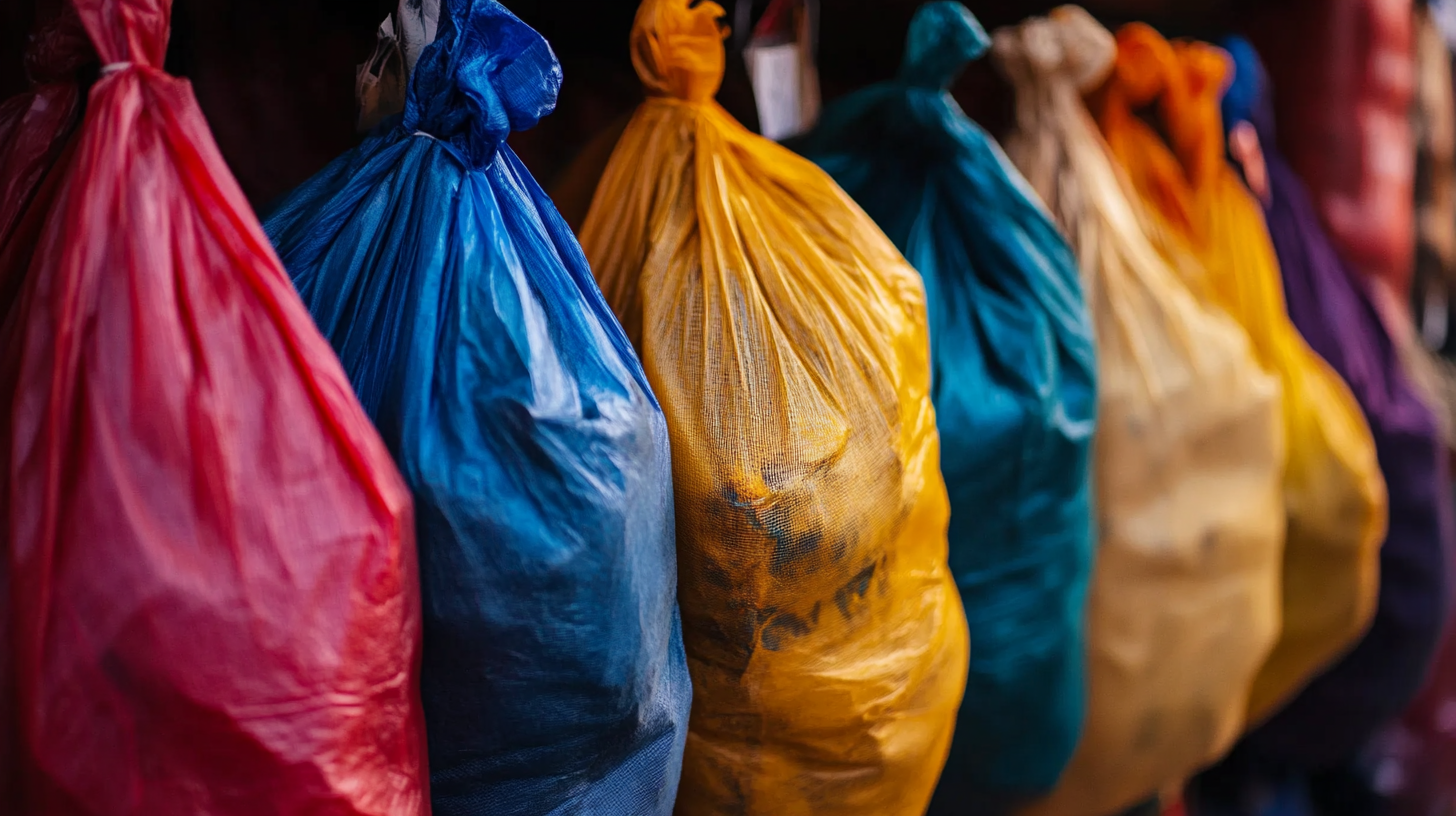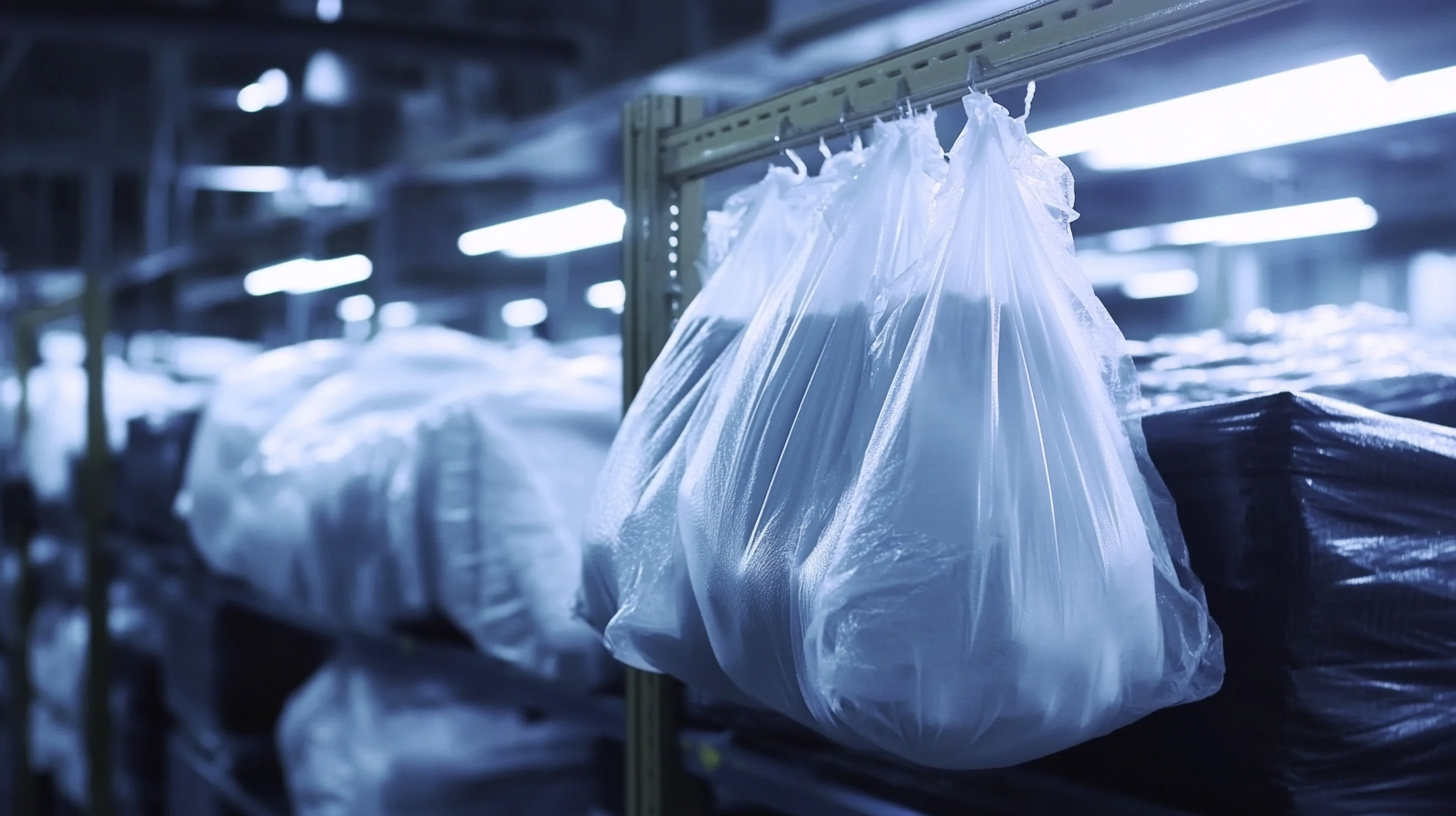
China Manufacturing Thrives Amidst US China Tariff Challenges with Best Clothes Shipping Bag Solutions
In recent years, the trade relationship between the United States and China has been fraught with challenges, notably the imposition of tariffs that have impacted various sectors of the economy. Despite these hurdles, Chinese manufacturing, particularly in the textile industry, has shown remarkable resilience and growth. One of the standout products in this thriving sector is the Clothes Shipping Bag, which has emerged as a crucial solution for businesses looking to efficiently transport and deliver apparel. This blog explores the ways in which Chinese manufacturers have adapted to the tariff landscape, capitalizing on innovative packaging solutions like Clothes Shipping Bags that not only lower shipping costs but also enhance sustainability. As we delve into the strategies that have propelled Chinese manufacturing forward, we will highlight the importance of these shipping solutions in navigating current challenges and positioning businesses for future success.

Resilience of China Manufacturing in a Tariff-Heavy Landscape
Despite the ongoing tariff challenges between the US and China, the resilience of China’s manufacturing sector has been remarkable. According to the National Bureau of Statistics of China, the manufacturing Purchasing Managers' Index (PMI) consistently remained above 50 in 2023, indicating sustained growth in the industry. This resilience is not just a testament to manufacturers’ adaptability but also showcases their ability to innovate under pressure. With over 30% of global apparel manufactured in China, companies are increasingly prioritizing cost-effective solutions, such as high-quality clothing shipping bags, to maintain competitive advantages and ensure product safety.
Moreover, a recent report from Statista highlighted that the value of China's textile and apparel exports is projected to reach approximately $275 billion in 2023, reflecting a robust export economy. The focus on specialized products like shipping bags has allowed manufacturers to cater to both domestic and international needs efficiently. As e-commerce continues to expand, the demand for sustainable and durable shipping solutions is surging, prompting manufacturers to invest in advanced materials and eco-friendly practices. This strategic pivot not only mitigates the impact of tariffs but also positions China as a leader in the evolving global marketplace.
China Manufacturing Resilience Amid US-China Tariff Challenges
Innovative Strategies for Overcoming Tariff Challenges in Manufacturing
The manufacturing landscape in China continues to show resilience even amid the challenges posed by U.S.-China tariffs. Innovative strategies are crucial for companies looking to navigate these hurdles while maintaining profitability. A report from the China Federation of Logistics and Purchasing indicates that manufacturing growth in China has remained robust, with a PMI (Purchasing Managers' Index) above 50 for the past several months, signaling expansion. To address tariff impacts, manufacturers are increasingly turning to alternative sourcing strategies, such as diversifying supply chains and investing in automation technology.
In addition, the adoption of advanced shipping solutions, including best-in-class clothing shipping bag designs, plays a pivotal role in reducing costs and mitigating the effects of tariffs. According to a recent study by the American Apparel & Footwear Association, companies that implement efficient packaging systems can lower their shipping expenses by up to 30%. This reduction not only improves the bottom line but also enhances the sustainability of the supply chain. As manufacturers embrace these innovative strategies, they position themselves to thrive in an increasingly competitive global market, ensuring long-term success despite ongoing trade challenges.

The Impact of US-China Trade Relations on Global Supply Chains
The evolving landscape of US-China trade relations profoundly influences global supply chains, reshaping how businesses source materials and deliver products. Tariffs imposed on Chinese goods have prompted manufacturers to reassess their strategies. Companies are now seeking innovative solutions, such as advanced shipping bag technologies, to reduce costs and mitigate the impact of tariffs. As a result, these shipping solutions not only streamline logistics but also enhance packaging sustainability, aligning with the growing demand for environmentally friendly practices.
Moreover, the shifting dynamics have accelerated the diversification of supply chains. Businesses are exploring alternatives beyond China, considering countries like Vietnam and Bangladesh as viable options for manufacturing. However, China's robust infrastructure and expertise remain unparalleled, allowing it to continue thriving in certain sectors, particularly in apparel. Adapting to these challenges requires agility and foresight, as companies navigate the complexities of international trade while striving to maintain efficiency and quality in their offerings.

Best Practices for Choosing Clothes Shipping Bag Solutions
In 2025, the eCommerce landscape continues to evolve, highlighting the importance of efficient shipping practices, especially for clothing retailers. As reports indicate, 57% of consumers prioritize fast shipping options, making it essential for businesses to adopt strategies that minimize transit times while cutting costs. Leveraging advanced shipping bag solutions can effectively streamline logistics; lightweight yet durable shipping bags can reduce shipping fees and contribute to sustainability efforts. This shift not only meets consumer demands but also aligns with the growing trend towards eco-friendly packaging.
When selecting the ideal clothes shipping bag solutions, businesses should consider materials that offer both protection and sustainability. With a recent study showing that over 70% of consumers prefer brands that use recyclable materials, deploying eco-friendly packaging is not just good for the environment—it can also enhance brand loyalty and customer satisfaction. Evaluating options such as biodegradable plastics or recyclable mailers can significantly impact a brand's market perception. Therefore, embracing these best practices in shipping can position retailers favorably amidst ongoing tariff challenges and rising logistics costs.
China Manufacturing Thrives Amidst US China Tariff Challenges with Best Clothes Shipping Bag Solutions
| Solution Type | Material Used | Size Options | Sustainability | Cost per Unit (USD) |
|---|---|---|---|---|
| Flat Poly Bags | Low-density polyethylene | Multiple sizes from 12"x15" to 24"x36" | Recyclable | 0.10 |
| Gusseted Bags | Polyethylene | From 10"x18" to 20"x30" | Compostable | 0.15 |
| Reusable Shopping Bags | Non-woven polypropylene | Various sizes available | Reusable and recyclable | 0.50 |
| Retail Bags | High-density polyethylene | Standard sizes 14"x24" | Recycable | 0.08 |
| Mailing Bags | Polyethene with bubble lining | Various sizes from 10"x14" to 18"x24" | Partially recyclable | 0.30 |
Future Prospects for China Manufacturing Amidst Ongoing Tariffs
China's manufacturing landscape is navigating a complicated terrain amidst U.S. tariffs, but it continues to thrive with innovative solutions in sectors like textiles. As tariffs perpetuate uncertainty, reports indicate that U.S. companies are bracing for price hikes to offset the increased costs associated with imported goods. According to recent S&P Global surveys, while there has been some recovery in U.S. output following a temporary easing of tensions, the entrenched 10% tariffs remain a significant barrier for businesses reliant on Chinese imports. This scenario underscores the resilience of the Chinese manufacturing sector, especially with companies adapting by enhancing efficiency and exploring new markets.
Moreover, the future of China’s manufacturing is intricately linked to global supply chain dynamics. Analyses indicate that despite challenges, China remains central to four major industries—apparel, electronics, solar photovoltaics, and automobiles—sustaining a prominent role in their respective supply chains. The ongoing pressures from tariffs have prompted manufacturers in China to rethink their strategies, with innovations like advanced clothing shipping bag solutions emerging as critical components to maintaining competitiveness. As firms like Shein reconsider their production footprints, the Chinese government’s stance against such moves highlights its commitment to retain manufacturing within its borders, further shaping the trajectory of this vital economic sector.



